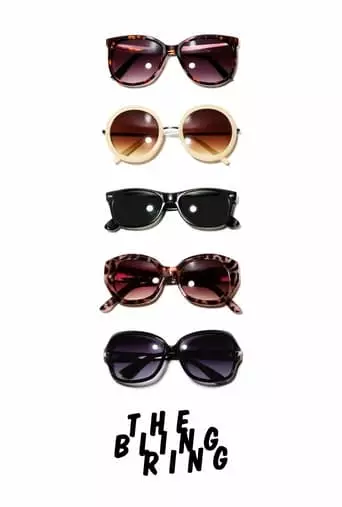Inspired by actual events, a group of fame-obsessed teenagers use the Internet to track celebrities’ whereabouts in order to rob their homes.
The Bling Ring is a 2013 crime drama directed by Sofia Coppola, based on real events from the 2009 Vanity Fair article “The Suspect Wore Louboutins” by Nancy Jo Sales. The story follows a group of teenagers from Los Angeles who, driven by a desire for fame and wealth, break into the homes of celebrities to steal their luxury items. The group, led by Rebecca (Katie Chang), targets high-profile figures like Paris Hilton, Lindsay Lohan, and Orlando Bloom. They use social media to track their victims’ whereabouts and plan their heists. The film captures the thrill of their crimes and the consequences they eventually face when they are caught.
Analysis and Themes:
- Celebrity Obsession and Materialism: One of the central themes of The Bling Ring is the obsession with celebrity culture and materialism. The teenagers are fixated on the wealth and status of the stars they rob, often expressing their admiration through the items they steal. The film critiques a society where appearances and possessions are more important than values or personal connections. Coppola uses irony to expose the emptiness of this pursuit, portraying the teens’ actions as a misguided attempt to achieve the lifestyle they idolize.
- Morality and Responsibility: The film doesn’t overtly judge the characters but instead highlights their moral indifference. The teenagers are portrayed as naive and impressionable, shaped by a culture that values instant gratification and fame. This creates a tension between their actions and the consequences that follow. The lack of self-awareness in the characters suggests that their understanding of right and wrong is blurred by their environment.
- Consequences of Actions: Although the film is filled with a sense of thrill and excitement during the robberies, it also conveys the inevitable downfall of these actions. The teens’ arrests, shown with a touch of irony, remind the audience that there are real consequences for living outside societal norms.
- Youth and Rebellion: At its core, The Bling Ring also explores themes of youth rebellion. The teens’ actions can be seen as a form of rebellion against the structures of authority in their lives—parents, schools, and society. However, their rebellion is not against oppressive systems but against the dullness of their own lives, which they try to escape by immersing themselves in the superficial world of the rich and famous.
Impact of the Movie:
The Bling Ring has a significant cultural impact, as it mirrors the increasing obsession with celebrity culture and social media in the 21st century. The film’s release coincided with a growing awareness of how social media was reshaping our lives and relationships, making it a timely commentary on the dangers of living in a digital, image-driven world. It also opened a conversation about how society glamorizes fame and wealth, often at the expense of deeper values.
10 Reasons to Watch The Bling Ring:
- Timely Social Commentary: The film offers a sharp critique of celebrity culture, social media, and materialism, making it a relevant watch in today’s image-obsessed world.
- Sofia Coppola’s Direction: Known for her unique filmmaking style, Coppola’s direction brings a sense of detached irony and emotional distance, creating a compelling atmosphere that captures the emptiness of the characters’ actions.
- Strong Performances: Emma Watson, as the self-absorbed Nicki, and Katie Chang, as the leader Rebecca, deliver memorable performances that showcase the characters’ lack of self-awareness.
- Glamorous Yet Hollow: The film presents a glamorous world of luxury and excess, only to reveal the emptiness that lies beneath, making for a thought-provoking experience.
- A Unique Perspective on Crime: Rather than focusing on the criminal acts themselves, the film explores the psychology behind the heists, providing a fresh perspective on crime.
- Cultural Reflection: The film is a snapshot of a specific moment in pop culture, offering insight into the social dynamics of the late 2000s.
- Beautiful Cinematography: The film’s use of color and visual composition helps convey the superficial nature of the characters’ desires and the emptiness of their actions.
- Humor and Irony: Coppola’s light touch with irony allows the film to balance the dark subject matter with moments of humor, creating a unique tone that is both entertaining and thought-provoking.
- Exploration of Youth and Identity: The film delves into the identity crises faced by young people who are influenced by the pressures of fame and consumerism.
- Real-Life Inspiration: Based on true events, the film gives viewers a chance to reflect on the real-life consequences of the Bling Ring’s actions and the cultural forces that enabled them.
How You Will Feel After Watching:
After watching The Bling Ring, you might feel a mixture of fascination and unease. The film presents the allure of fame and wealth in a way that is both seductive and hollow, leaving you questioning the values that drive modern society. You may feel sympathy for the characters, despite their criminal behavior, as Coppola refrains from overtly condemning them, offering a more nuanced view of their motivations. At the same time, the film may leave you reflecting on the emptiness of celebrity culture and the impact of social media on young people’s perceptions of success and identity. Ultimately, it’s a film that challenges you to think about what truly matters in life, beyond the superficial allure of material wealth and fame.

